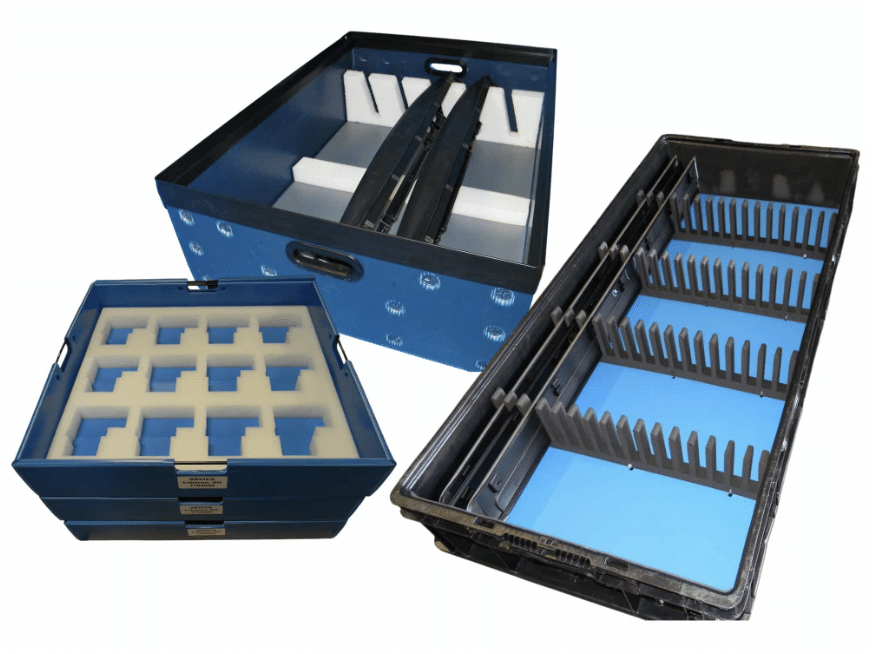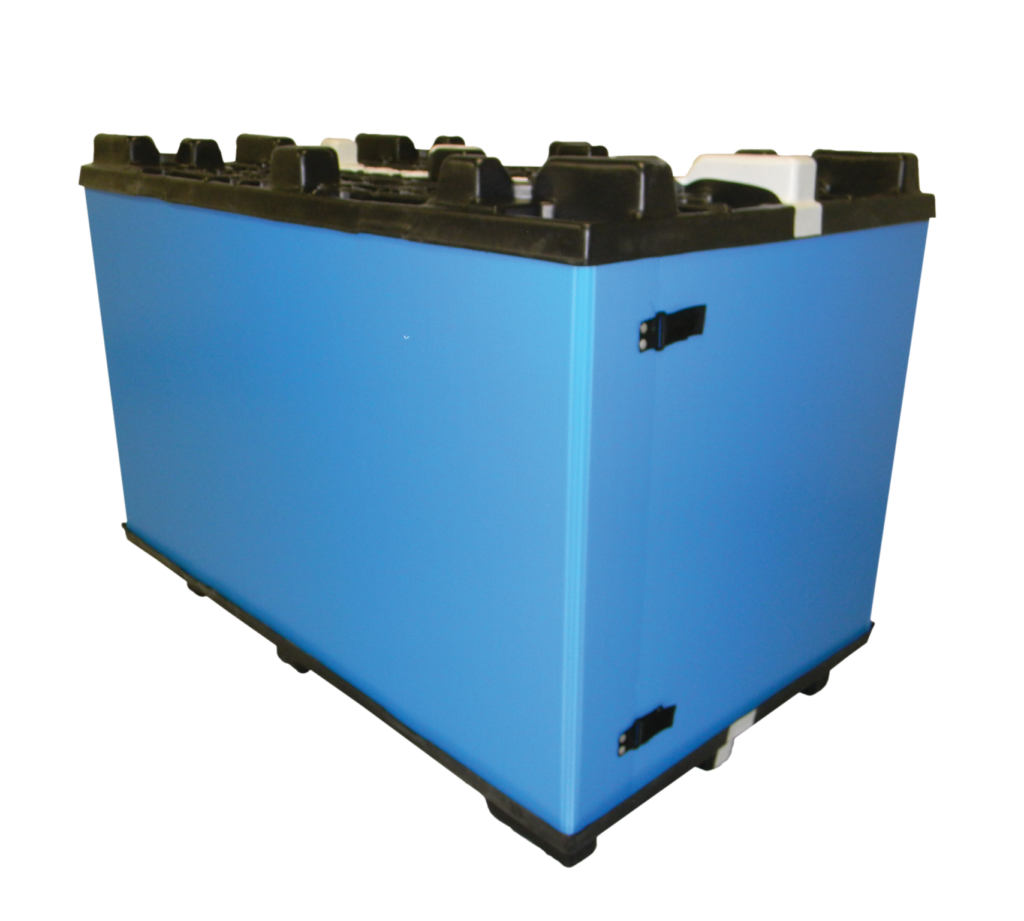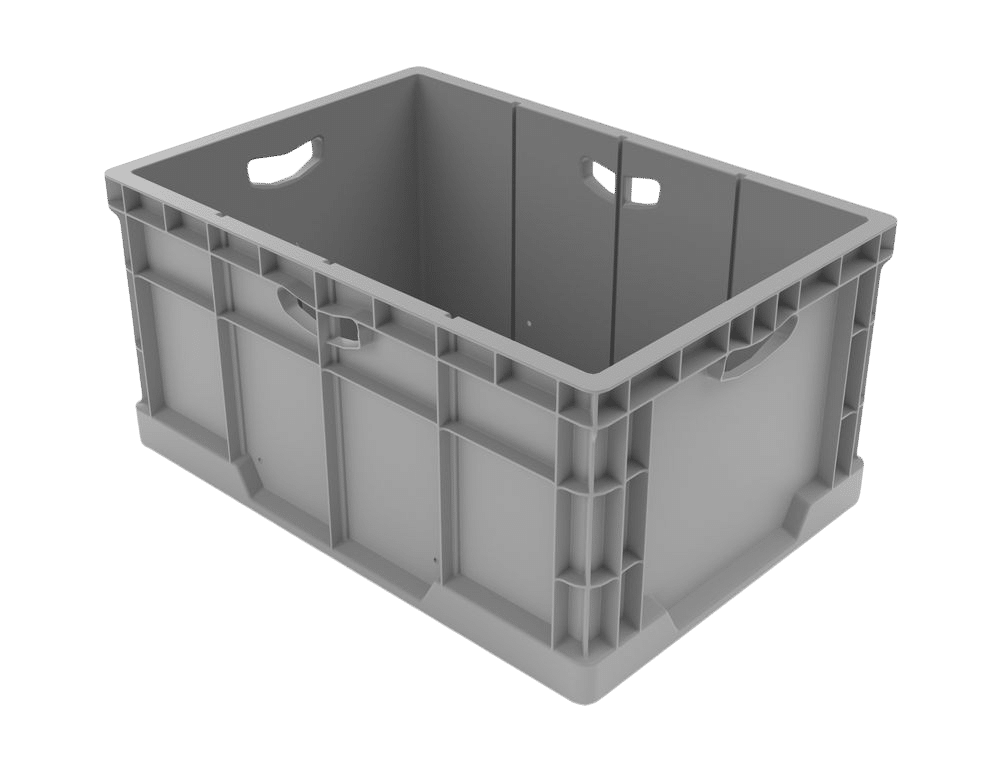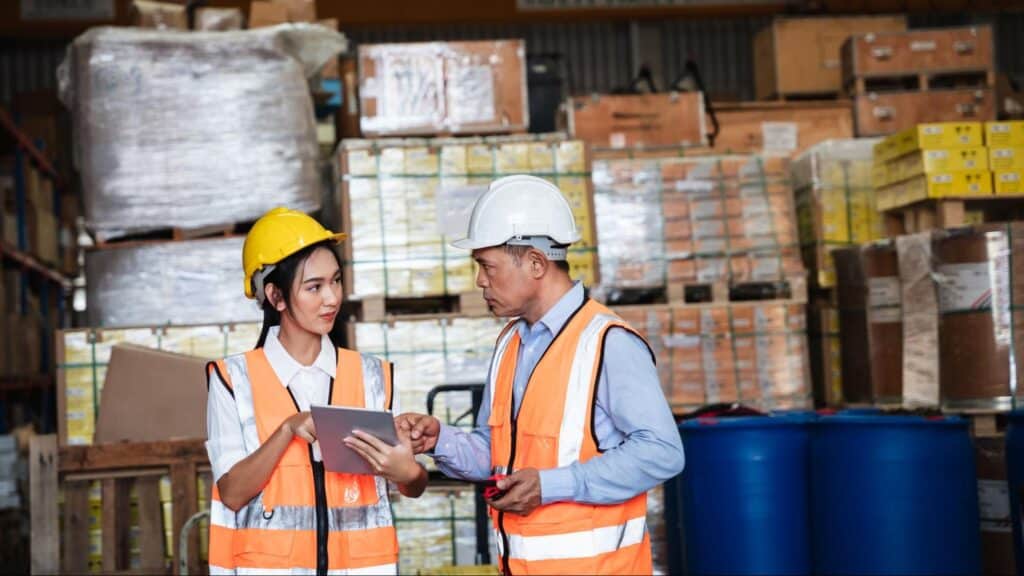In today’s volatile global market, supply chain disruptions are no longer a possibility – they are an inevitability. Geopolitical tensions can shift trade policies overnight, natural disasters can sever critical transport links, and sudden spikes in consumer demand can create paralyzing bottlenecks.
These events pose a direct threat to production schedules, product availability, and ultimately, customer trust. For any business, the critical question is no longer if a disruption will occur, but how to build an operation robust enough to withstand the shock and maintain continuity.
The answer lies in a resilient supply chain – a proactive strategy that weaves flexibility and visibility into your operations. This article will guide you through the essential components of this approach, from diversifying suppliers and managing inventory with agility to leveraging technology and fostering deep collaboration across your network. Finally, we will uncover why strategic industrial packaging is the unsung hero of this framework – the physical component that underpins every strategy and ensures your assets are protected from start to finish.
The Core Components of a Resilient Supply Chain
Building a truly resilient supply chain requires a multi-faceted approach where several core strategies work in concert to create a flexible and robust operational framework.
1. Embracing Supplier Diversification
Relying on a single location or a small pool of suppliers can amplify risk. Regional disasters or political instability can disrupt production and deliveries. Gartner’s best practices for supply chain resilience advise that spreading sourcing and manufacturing across multiple partners can stabilize operations; having two or three qualified suppliers for critical materials reduces region-specific risks and may lead to competitive pricing. Similarly, the IMF notes that diversified suppliers provide additional contingency options during major disruptions.
A successful diversification strategy also benefits from robust packaging. Custom packaging solutions – such as containers designed specifically for a product’s dimensions and fragility – can contribute to secure handling during longer or more segmented shipping routes. When packages are designed to meet a product’s unique requirements, damage is minimized, and inventory management becomes more efficient. Open communication among supplier networks further ensures that if one source encounters issues, another can quickly meet demand.
2. Agile Inventory Management for Operational Flexibility
Inventory management is at the heart of balancing supply and demand. Stockouts alienate customers and reduce revenue, while overstocking ties up precious capital. An agile approach leverages real-time data to keep inventory levels aligned with current market needs. By tracking sales patterns daily, businesses can reorder quickly without holding excessive buffer stocks. As detailed in the Harvard Business Review’s examination of supply chain agility, data-driven forecasting combined with flexible storage and transport strategies forms a solid defense against unexpected market shifts.
Lean or just-in-time inventory methods are not only cost-effective; they maintain system fluidity. If one region experiences a production disruption, inventory from another can be reallocated rapidly. This flexibility is enhanced by integrating smart packaging and technology designed to streamline logistics. Key enablers include:
- Purpose-built packaging, such as collapsible sleeve packs or stackable totes, which simplify warehousing and handling.
- Advanced labeling systems, including barcodes and RFID, which strengthen visibility and communication throughout the supply chain aligning with recommendations from the Institute for Supply Management.
By refining forecasts and distribution channels, companies can reduce labor hours and wait times, ensuring that unforeseen shifts in demand or localized shutdowns do not cause catastrophic bottlenecks.
3. Leveraging Advanced Technology in the Supply Chain
Digital transformation is reshaping supply chain management. Advanced technologies – predictive analytics, artificial intelligence (AI), and real-time tracking – sharpen visibility from raw materials to finished goods. By processing data from sensors, artificial intelligence can transform supply chain management with predictive capabilities, allowing teams to:
- Forecast potential mechanical failures in machinery or vehicles.
- Recommend optimal shipment re-routing based on weather or traffic data.
- Alert managers to minor discrepancies before they escalate into major problems.
Real-time intelligence also permits micro-adjustments to transportation routes or distribution strategies. AI-driven models can rapidly evaluate multiple paths and select the most efficient one, reducing lead times. Predictive analytics can reveal likely demand surges, allowing businesses to reassign stock or ramp up production accordingly.
According to NIST guidelines for robust supply chain security, continuous risk assessments and contingency planning are integral in adopting these technologies. APICS further emphasizes the role of standardized platforms and integrated software in enhancing global network collaboration.
Optimized packaging can also interact seamlessly with these advanced systems. When packaging is built with consistent dimensions and clear labeling, automated warehouses benefit from faster robotic handling, fewer errors, and streamlined scanning. The fusion of secure physical packaging with enhanced digital tracking creates an ecosystem adept at responding to emerging challenges and evolving consumer expectations.
4. Fostering Collaboration Across the Supply Chain

Resilient supply chains rely on collaboration in addition to technology and inventory strategies. When manufacturers, suppliers, carriers, and distributors share data and coordinate contingency plans, they form a unified response to disruptions. Collaboration ensures that every stakeholder is engaged in resolving delays, material shortages, or unexpected regulatory changes.
Shared platforms where stakeholders can view shipment statuses, inventory levels, and capacity constraints build trust and allow for timely interventions. In situations where a single logistics hub experiences a breakdown, coordinated responses from adjacent suppliers or carriers can mitigate the effects. Industry Week’s case studies on collaboration illustrate that collective problem-solving strengthens every link in the value chain.
For instance, in the automotive sector, manufacturers have seen benefits when they work closely with both primary and secondary suppliers. By establishing open channels for sharing real-time information, these companies have managed to maintain production flow even when individual components were delayed, thereby minimizing the ripple effects on assembly lines.
Strategic Packaging: The Unsung Hero of Resilience
While often overlooked, packaging is the physical backbone that enables every other resilience strategy. It is a key element in preventing and overcoming supply chain disruptions, directly influencing speed, safety, and efficiency. When products traverse long distances under tight schedules, generic packaging can lead to damage or loss that disrupts the entire operation. Custom-designed packaging that fits a product’s unique shape can help absorb shocks, regulate temperature, and reduce exposure to external threats, ensuring assets arrive intact.
Well-planned packaging also accelerates loading and unloading times—a crucial factor when labor is limited or hubs are congested. By integrating smart design features, companies can directly improve efficiency. Key features include:
- Stackable units that maximize space in warehouses and transport.
- Collapsible walls that reduce return shipping costs and storage footprints.
- Ergonomic grips that reduce manual errors and enhance worker safety.
In this way, strategic packaging directly mitigates bottlenecks and contributes to more efficient inventory management by preventing unnecessary delays.
For example, some manufacturers have observed significant improvements by adopting more tailored packaging solutions. In certain cases, companies previously experienced delays and damage due to generic cartons that poorly fit uniquely shaped parts. By working with packaging specialists to design custom containers with adjustable foam inserts, these manufacturers have reported reductions in product damage and more efficient use of warehouse space.
This practical example illustrates how targeted investments in custom packaging are not an afterthought, but a core component of overall supply chain resilience – enhancing product safety during transit and fostering greater trust among assembly partners.
The Importance of Sustainability in Supply Chain Resilience
While resilience is often measured by responsiveness and agility, sustainability is an equally crucial component. Businesses that integrate eco-friendly practices – such as using renewable materials or reducing waste – tend to realize long-term benefits. Sustainable practices not only lessen dependency on volatile resources but also resonate with modern consumer expectations.
Redesigning product packaging with reusable or recyclable materials can reduce environmental impact and, over time, lower costs. Sturdy packaging that withstands long-haul transport reduces the incidence of damage and replacement expenses, while also supporting a company’s environmental stance.
Responding to consumer demands for eco-friendly practices can differentiate a brand, as more regulatory bodies and investors emphasize the importance of sustainability alongside resilience. The US Environmental Protection Agency’s guidelines on sustainable packaging illustrate that eco-friendly methods contribute to overall supply chain robustness.
By integrating sustainability with resilience, companies can proactively adapt to changes in regulations and consumer behavior, fostering a cyclical improvement in both operational efficiency and corporate responsibility.
Preparing for Future Challenges: Strategic Investments for Long-Term Resilience
As supply chain networks become increasingly complex, long-term resilience must be a continuous commitment. Constantly evolving vulnerabilities – from extreme weather events to geopolitical uncertainties – demand that companies repeatedly refine their processes and priorities. Investments in enhanced data analytics, logistical improvements, and dynamic packaging systems are crucial to meet the demands of an unpredictable market.
Technological investments in AI and predictive analytics help ensure that forecasting models adapt to the latest data, allowing companies to evaluate different sourcing strategies or distribution routes before disruptions occur. Strengthening workforce training to handle these technologies further secures operational integrity by reducing potential skill gaps.
From a packaging perspective, regular audits of product dimensions, shipping lanes, and storage conditions facilitate ongoing improvements. By continually updating specifications and gathering feedback from vendors and carriers, companies can ensure that their packaging remains both current and resilient against the pressures of a shifting global market.
How Universal Package Engineers Resilience into Your Operations

Understanding the principles of a resilient supply chain is the first step; implementing them with the right physical assets is what separates strategy from success. At Universal Package, we partner with businesses to translate resilience theory into tangible, operational advantages through custom-designed industrial packaging. Our solutions are engineered to directly support the core components of a modern, robust supply chain.
Protecting Assets Across Diversified Networks
As your supply chain diversifies, your products travel longer and more complex routes. Our custom foam assemblies and durable corrugated plastic containers are designed to provide exact-fit protection, absorbing shock and preventing movement to ensure your components arrive damage-free, no matter the distance. This reduces the risk of quality control issues and maintains trust with your partners.
Enhancing Agility in a Fast-Paced Environment
An agile inventory system requires packaging that is easy to handle, store, and transport. Our solutions are specifically engineered to maximize warehouse space and integrate with automated systems. Key offerings include:
- Stackable Totes & Collapsible Sleeve Packs: To improve storage density and reduce return-trip costs.
- Custom Steel Racks: For heavy-duty applications, providing durable and reusable solutions that speed up handling and improve safety.
A Collaborative Approach to Custom Solutions
We believe resilience is built through partnership. Our design process is a collaborative effort, where we work with your team to analyze your product’s specific dimensions, transit challenges, and handling requirements. Whether you are in the medical industry, automotive industry, or another complex sector, we develop a packaging solution that is not just a container, but a strategic tool for a more resilient operation.
By integrating these purpose-built packaging solutions, you fortify the physical backbone of your supply chain, ensuring your operational strategies are supported by assets built to withstand real-world pressures.
Fortifying Your Supply Chain for Future Success
In a world of constant volatility, a resilient supply chain is no longer a competitive advantage—it is a requirement for survival. While the core components of diversification, agility, technology, and collaboration form the strategic blueprint, it is strategic packaging that serves as the physical backbone, turning that plan into a tangible, protected reality. By treating packaging not as an afterthought but as a core component of your strategy, you reduce risk, streamline operations, and fortify your entire value chain.
At Universal Package, we specialize in engineering that physical backbone. Our custom-designed industrial packaging solutions help you strengthen your operations with durable, efficient, and secure material handling built for unpredictable conditions. Contact us today to learn how we can help your organization enhance supply chain stability and prepare for any challenge the future holds.





